Sterling Homes Becomes First Winnipeg Homebuilder to Earn CHBA Net-Zero Ready Certification
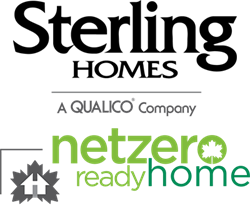
Winnipeg, MB – Sterling Homes Winnipeg is the first homebuilder in Winnipeg and the second in Manitoba to obtain the Canadian Home Builders' Association (CHBA) net-zero ready certification for its single-family detached home at 54 Siskin Bay, which was completed this summer. The accomplishment aligns with Qualico's commitment to sustainability and innovation and demonstrates Sterling Homes Winnipeg’s position as an industry leader offering energy-efficient options to its customers.
David Wooden, Vice-President, Broadview & Sterling Homes Winnipeg, said achieving the first net-zero ready home in Winnipeg was very important for the team and allowed them to showcase the company’s commitment and focus on building homes with sustainability and efficiency in mind.
“A main focus of Sterling Homes is providing sustainable and efficient homes for both homeowners and the environment long-term,” he said. “Achieving the net-zero ready certification was very exciting to be able to highlight our building standards and practices meeting the high level of requirements. We are very excited to continue building net-zero ready homes, as well as working on achieving our first fully net-zero home.”
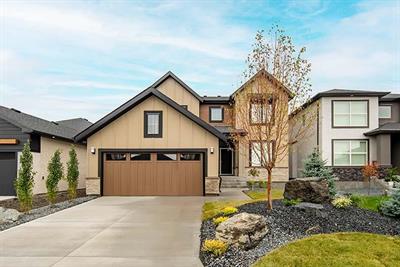
The two-storey, 2,533-sq.-ft. home at 54 Siskin Bay is net-zero ready, meaning it is ready for a future homeowner to add photovoltaic (solar) panels to the roof. Once the homeowner adds solar panels, the home will become net-zero (depending on the amount of energy the homeowner uses). This differs from net-zero homes, which already have solar panels in place.
The home also has additional features to help make it as energy-efficient as possible, including exterior panel insulation (R value of 27.3 versus the standard 15.9), additional attic insulation, rigid insulation against the basement walls (R value of 21.5 versus the standard 15.9), a 32,000 BTU air source heat pump, an electric air handling unit, an ion thermostat that’s connected directly to the weather office that turns on and off the heat pump based on the settings, and a hybrid hot water tank.
In addition, everything in the house is electric (no gas), as the team considered CO emissions as well when designing the home.
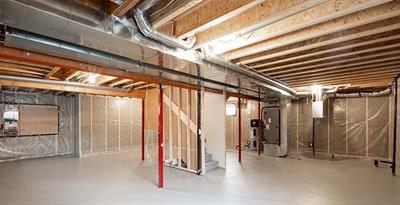
Based on modelling information, these features make the home 58.1% more efficient than a code-built home, using 57 gigajoules per year versus 136 gigajoules per year for a standard home. Yet, you wouldn’t know just by looking at the home that it’s net-zero ready, as Sterling Homes Winnipeg took one of its standard plans and converted it to meet the net-zero ready requirements without adding any out-of-the-ordinary aesthetic features.
Energy became part of the National Building Code in 2010. In 2020, the code was updated, adding five different tiers in the energy code that builders need to comply with. The province has adopted tier 1 as the level that must be obtained by Manitoba builders, but most of the houses Sterling Homes Winnipeg builds are already in tiers 2 and 3, which are more stringent codes.
Dale Verville, Construction Manager, Broadview & Sterling Homes Winnipeg, is past Chair of the Technical Research Committee (TRC) of the Manitoba Home Builders’ Association (MHBA), having served eight years in that capacity and has been a sitting member of the Committee for the past 35 years.
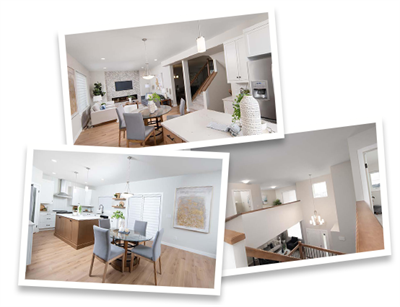
Representing the province nationally for the past five years on the CHBA Technical Research Committee, Dale noted that code changes, both current and future, are a reality that builders must continue to consider.
Dale is of the view that homebuilders such as Sterling Homes Winnipeg can gain the upper hand by proactively conducting due diligence, learning from their mistakes, and absorbing lessons in the present. That way, they can stay ahead of the curve instead of waiting until building code requirements change and then rushing to meet them.
“Houses have to be more resilient than they have been before,” he said. “The codes are pushing us to that. Climate change is bringing that. With the TRC, we deal a lot with codes and code development across the country. We know that this is going to be the next generation of housing in Canada and we have to be in front of it.”
Where it came to the build of 54 Siskin Bay, possible hurdles such as a limited roof surface area and the home’s orientation were strategically navigated to ensure energy could be captured efficiently to meet net-zero ready standards.
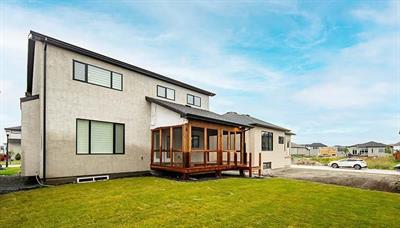
“We got creative and added a 12 x 18 ft. covered deck at the back, and that little bit of extra roof helped to meet net-zero ready requirements,” said Dale.
The team is now looking to build a net-zero home – this time a bungalow located just outside of Winnipeg in Oak Bluff West. They plan to apply lessons learned from the first build and expect to learn new lessons along the way that will shape subsequent Sterling Homes Winnipeg net-zero projects in the future.
Published: May 2019
2018 - A Year in ReviewPublished: May 2019
2018 - A Year in Review- Single-Family Homes
- Multi-Family Homes
- Communities
- Commercial
- Building Materials and Services
- Property Management
Let us help you direct your questions to the right team at Qualico.




